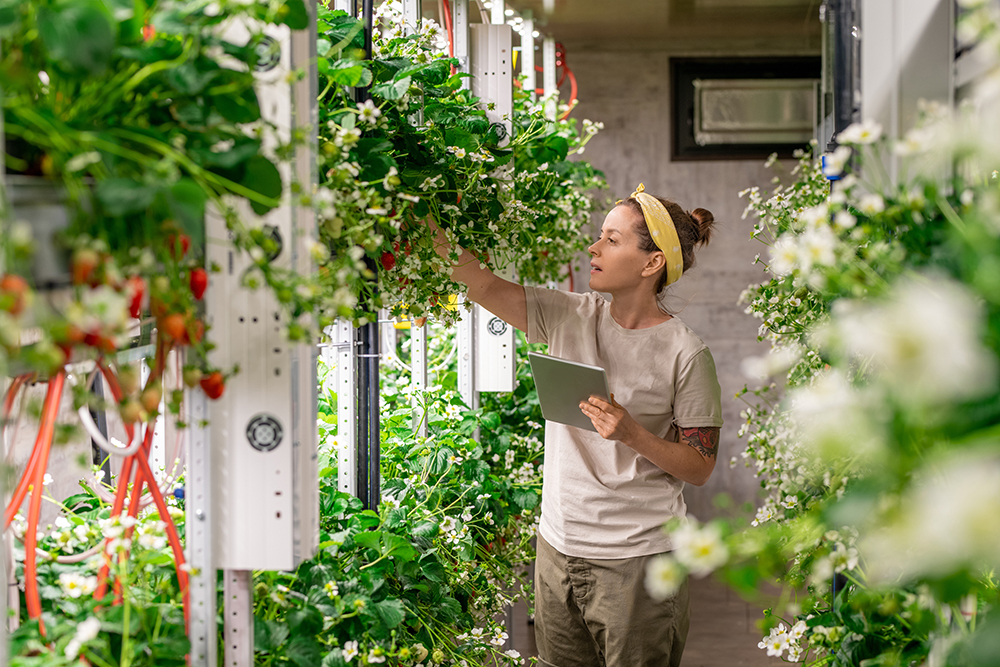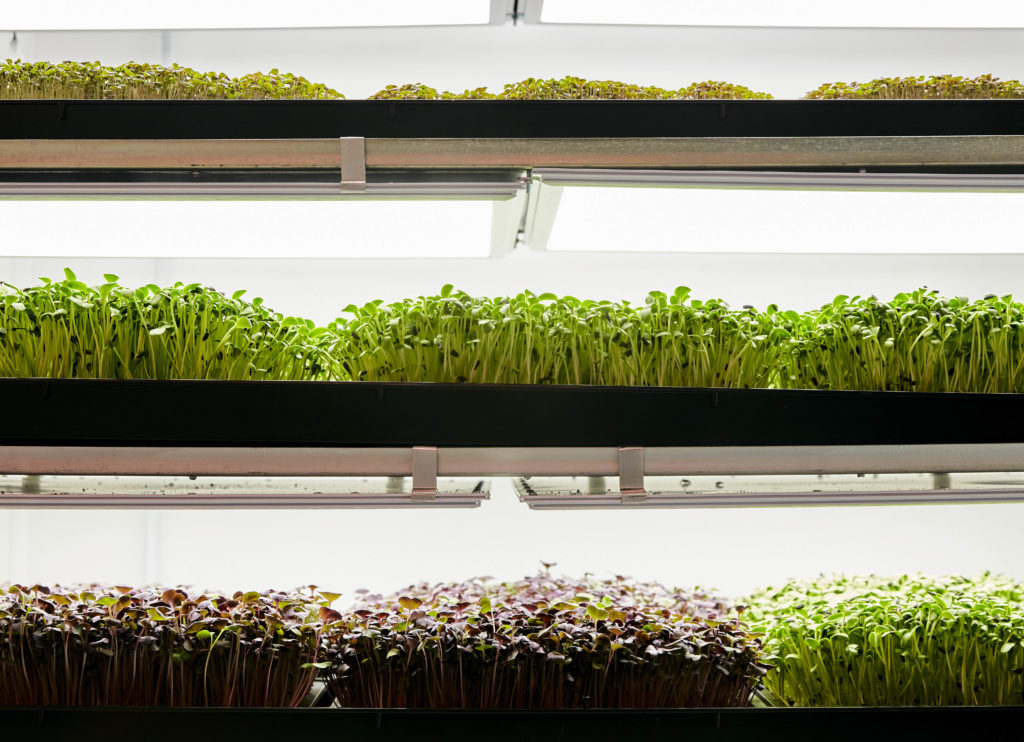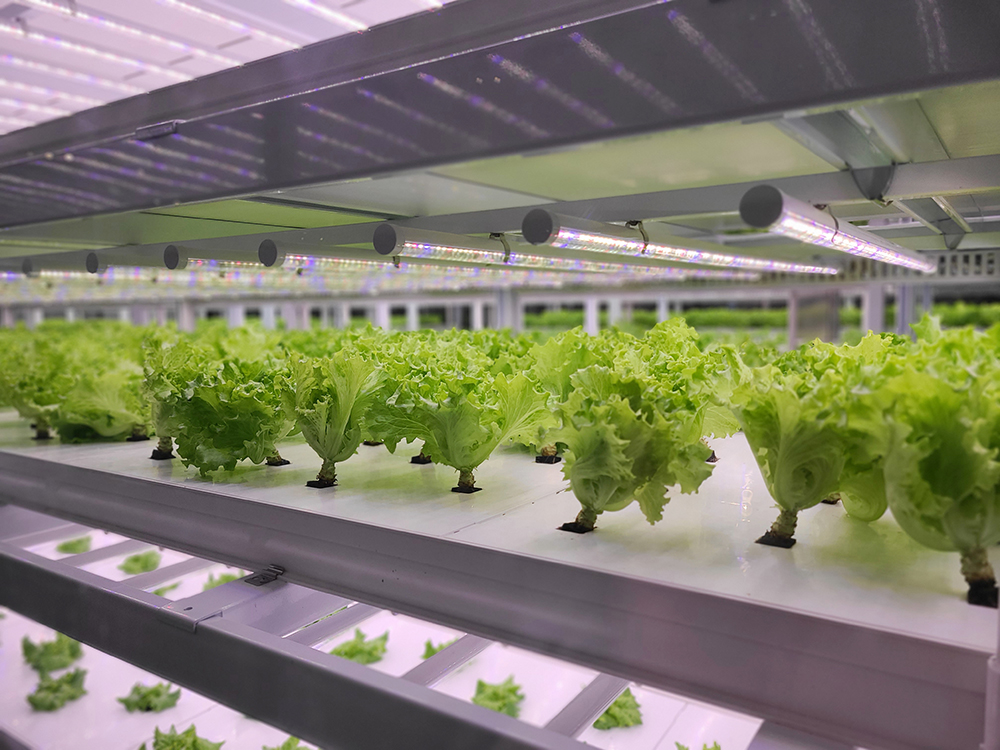
Vertical farming is a sustainable method of food production. With this farming method, growers cultivate plants in vertically oriented stacks, racks, or shelves using hydroponic techniques. Vertical farms allow more plants to grow in a smaller space, with less water, and LED lights replacing natural sunlight. This unique approach to farming allows the production of food and pharmaceutical crops in a controlled environment without soil or sunlight.
Along with being easier to manage and control, vertical gardening is a more sustainable way to produce food and has less of an impact on the environment. But why is it a better way to farm? Here are some ways vertical farming helps build more sustainable food systems:
Reduce Water Usage
Vertical farming uses less water than traditional agriculture, making it a more sustainable way to grow food. Traditional agricultural methods require large amounts of water for irrigation and fertilizer to grow crops. Therefore, these practices have a negative impact on the environment because they use fossil fuels like petroleum or natural gas as energy sources.
Because vertical farming uses a closed-loop system, they use up to 95% less water than traditional agriculture. This saves money and energy for farmers who would otherwise have to pump water from wells or other sources. Vertical farming also reduces the amount of water farmers need for irrigation, which can improve the quality of local water supplies.

Vertical Farming Produces Food That Doesn’t Have to Travel Far to Reach Customers
With vertical farming, food travels shorter distances, leading to less energy use and carbon emissions. Most vertical farming occurs in urban areas, utilizing unused spaces like warehouses. Not only is this approach more environmentally friendly, but the resulting produce loses fewer nutrients during transportation, leading to more nutrient-dense food.
Vitamin C and some B vitamins are especially susceptible to light and heat, and the loss of these vitamins during transport is significant. This farming method allows food to reach consumers with less harm to the environment and the loss of fewer nutrients. Produce doesn’t have to spend days or weeks in transit, and consumers get fresher, more nutritious food on their tables.
Year-Round Food Production
Vertical farming offers a way to grow food year-round, regardless of weather conditions. By taking advantage of techniques like hydroponics and aquaponics (using water to grow plants), farmers can grow crops all year long. This is especially helpful in areas that experience harsh winters or long periods without rain or sunshine. While this method isn’t ideal for every type of produce, it works well for leafy greens like lettuce because they need very little light exposure to thrive.

Greater Efficiency
Vertical farms use less water and space than traditional agricultural methods and allow food to grow in urban areas where there are no fields or open-air farmland. Unlike traditional farming, where you need a spacious plot of land to get a good yield, vertical farms are space efficient and allow for food production in small spaces that might otherwise go unused. Plus, since the crops grow indoors, there’s less risk of pests destroying them before they’re ready for harvest.
No Pesticides
Compared to traditional farming, where produce grows in an open area with exposure to parasites and threats of all kinds, produce on vertical farms grows in a controlled environment with little threat of pests. Therefore, there isn’t a need for pesticides or herbicides to protect them from menaces, unlike traditional crops. Vertically farmed produce doesn’t contribute to pesticides entering the environment, making it more eco-friendly.

Conclusion
These are just a few ways vertical farming can improve sustainability in the food industry and positively impact environmental health. While it is not a perfect solution, it has the potential to build more sustainable food systems around the world. It’s a way to produce healthier food that has less impact on the environment.
Opposed to traditional farming, which contributes significantly to total greenhouse gas emissions, vertical farming produces food in a sustainable and eco-friendly manner — and that’s good news for humans and the planet.
References:
Jain R. Vertical Gardening: A New Concept of Modern Era. ResearchGate. Published 2016. Accessed August 29, 2022. researchgate.net/publication/295646943_Vertical_Gardening_A_New_Concept_of_Modern_Era
